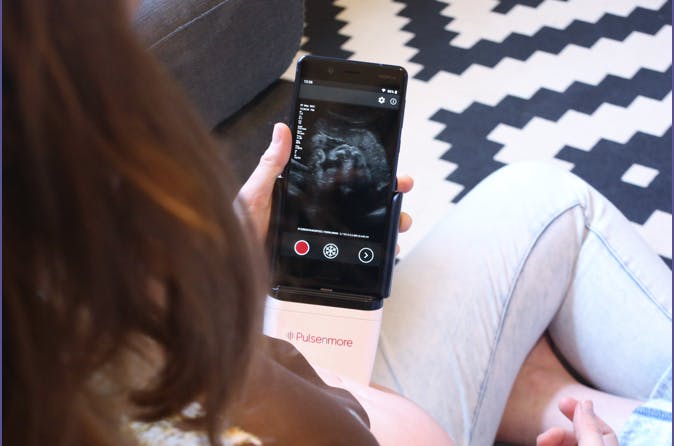Pregnancy telemedicine with at-home obstetric monitoring has been steadily expanding around the globe. The pandemic spurred a faster adoption of telemedicine, but the continual closures of maternity wards in rural areas are fueling an ongoing need for virtual care for pregnant patients. While maternal-fetal monitors are a mainstay, portable obstetric ultrasound technology is uncovering more possibilities for telemedicine.
At-Home Pregnancy Monitoring
Patients have an expanding number of options to monitor their pregnancy at home, including blood pressure, weight, fetal heart rate, fundal height and blood glucose monitors. These measurements — shared during virtual visits or through smartphone apps — can reduce how often patients need to travel to their doctor's office. Mobile apps combined with Bluetooth-enabled glucose monitors or blood pressure cuffs let patients communicate their readings for preeclampsia or gestational diabetes remotely with their doctors. This helps reduce unnecessary visits.
Telehealth technology remote monitoring has comparable quality to traditional care for both high-risk and low-risk pregnancies. A meta-analysis in the Journal of Telemedicine and Telecare looked at the outcomes of high-risk pregnancies for those who used telehealth for monitoring. Patients who received care through smartphone apps, an online platform and phone calls had fewer in-person visits and had similar outcomes to standard care. Telehealth links have connected some rural obstetrics practices with larger centers for maternal-fetal medicine specialist consultations. The local doctor's office shares ultrasound images with a larger medical center and confers with the patient to deliver the results.
Research in Obstetrics and Gynecology Clinics of North America also found that patients with low-risk pregnancies can have fewer perinatal visits, and some of those visits could be virtual. Shifts toward virtual monitoring visits have led to outcomes similar to traditional medical care with similar patient satisfaction.
One key is staying connected. Many patients need to know how to use the equipment and share their information. They also need regular check-ins to make sure they're accurately uploading their measurements.
Advances in Portable Obstetric Ultrasound
New technology is creating other opportunities for pregnancy ultrasound at home. A new device allows patients to perform an ultrasound at home. Currently, this device from Pulsenmore is approved in Israel and Europe. Patients receive a prescription for the device from their doctor and use it according to their doctor's instructions. The patient's smartphone docks in the ultrasound. An app guides the patient in performing the scan and then securely uploads the images for clinician review. Clinicians also have the option to review the scan in real time and guide the patients personally rather than through the app.
A medical professional's oversight is a critical component of adopting this technology. Patients in the U.S., U.K. and other countries can get over-the-counter fetal Doppler ultrasound heartbeat monitors. In some countries, at-home ultrasounds are available that don't have connections to a doctor. The British Medical Ultrasound Society (BMUS) urge caution when patients use these devices and advise they are not for diagnostic purposes.
Fetal Doppler ultrasound heartbeat monitors are frequently inaccurate and have no physician oversight. The BMUS recommends that a medical professional perform an ultrasound and only for clinical reasons. A portable obstetric ultrasound that provides clear clinical guidance with medical professional oversight can create more opportunities for patients in remote areas. They do not have to travel and can get answers from their doctor faster if there is a concern.
This technology also creates a strong position for midwives. As Australia sees more maternity ward closures, there is a call for midwives to fill the gap in care, particularly those trained in home care and births. Portable obstetric ultrasound with virtual connections can help midwives consult with specialists and expand available care to pregnant patients locally or at home.
Going forward, guaranteeing that insurance providers cover durable medical equipment for pregnant patients will be crucial.
As ultrasound technology expands and advances for more handheld units grow, virtually connecting patients with physicians is a more realistic outcome. Pregnant patients will continue to need access to routine in-person ultrasound exams conducted at a hospital or clinic, but the addition of telehealth from the comfort of their home can allow clinicians to identify if there is an issue, and potentially eliminate travel. The key to safely using these devices is to ensure that patients keep the connections open with their care providers.





